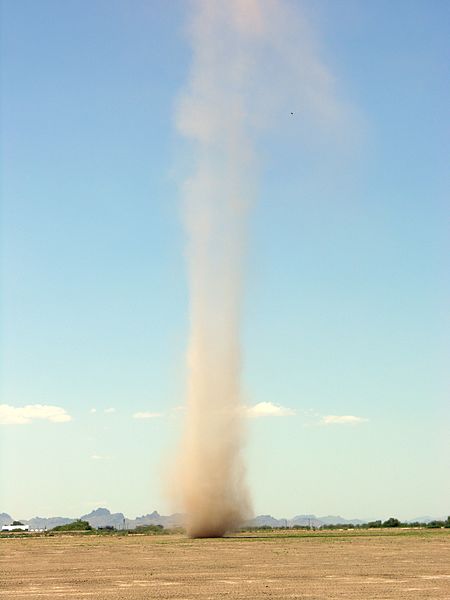What is a tornado?
A tornado is a very fast, spinning column of air, wind, and cloud that reaches down to the ground from a low level of the atmosphere. The shape of the air column can be described as a long, thin funnel.
Tornadoes are very dangerous, as they include very high wind speeds that are strong enough to destroy buildings, trees, and lift cars into the air.
Tornadoes typically form during other severe weather conditions, such as large thunderstorms. That means that the tornadoes form from specific types of storm clouds referred to as cumulonimbus clouds.

What causes tornadoes to form?
Aside from the presence of a thunderstorm and cumulonimbus clouds, there are many different conditions that need to be in place for tornadoes to form. There are a series of steps that happen in a chronological order that leads to tornado formation.
The first step is, as mentioned before, is a big thunderstorm and a cumulonimbus cloud. The second step involves a significant enough change in the direction of the wind, including a high speed of the wind, at a high enough altitude to generate swirling or spinning air.
The third step involves a pattern of rising air from the ground level, which gets shifted to a horizontal path when it collides with the swirling air at the higher altitude.
The fourth step involves the formation of a funnel of the swirling air, which begins to suck up more and more of the warmer air from the ground as it develops. The fifth step involves growing and lengthening of the funnel towards the ground.
The final step in the formation of a tornado is the connection of the swirling funnel of warm air to the ground.

What are the different aspects of a tornado?
Tornadoes are examined and described in terms of their shape, size, wind speed, color, and the air rotation. The shape of tornadoes, as mentioned before, is generally a long funnel, or a cone if they get particularly large.
Tornadoes come in many different sizes. In North America, typical tornadoes can measure approximately 500 feet in diameter, but there are some that come much smaller or much larger, from a range of just a few feet to even a mile or more wide.
Tornado wind speeds can get extremely high, even higher than in hurricanes. The range of standard wind speeds in tornadoes varies from around 65 miles per hour all the way up to 250 miles per hour.
Surprisingly, tornadoes can also come in a variety of colors, depending on the environmental conditions where they form. Some may not be visible, as with normal winds, but some will appear the colors of the clouds that they come from, such as white, gray, or black.
Some tornadoes have been appeared in strange blue, red, and green colors.
The typical rotation of a tornado is in a counterclockwise pattern in the northern hemisphere, but they have been observed to rotate in a clockwise pattern in regions of the southern hemisphere.

Questions:
- What is a tornado?
- What is the shape of a tornado?
- When do tornadoes form?
- How fast are tornado wind speeds?
- What direction do tornadoes spin in?

Answers:
- A tornado is a very fast, spinning column of air, wind, and cloud that reaches down to the ground from a low level of the atmosphere.
- The shape of the air column can be described as a long, thin funnel.
- Tornadoes typically form during other severe weather conditions, such as large thunderstorms.
- The range of standard wind speeds in tornadoes varies from around 65 miles per hour all the way up to 250 miles per hour.
- The typical rotation of a tornado is in a counterclockwise pattern in the northern hemisphere.